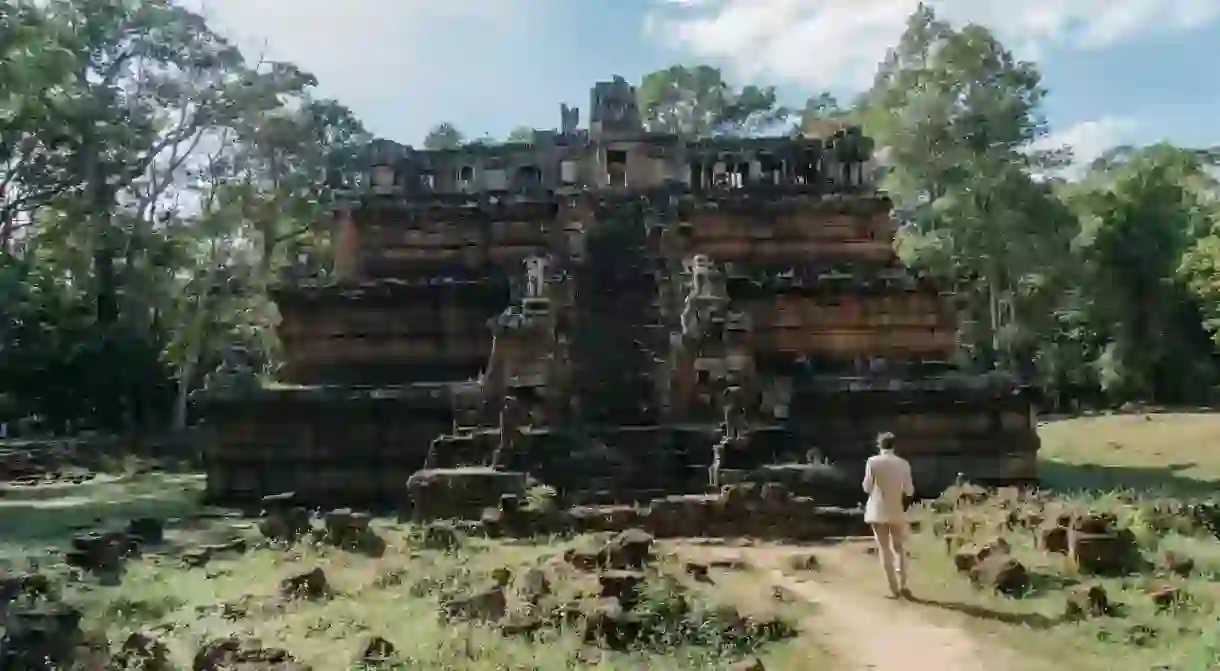11 Reasons to Visit Angkor Wat Before You Die

In 2016, almost 2.2 million people ticked Siem Reap’s Angkor Wat off their travel bucket list, and with good reason. Here are 11 reasons why you need to visit the sacred site before you die.

Witness a special sunrise
Despite sharing the moment with the thousands of tourists that crowd at the lotus lake to the front of Angkor Wat, there is something truly special about watching the sun peek from behind Angkor’s iconic spires. Double magic if you chance upon a truly spectacular sunrise that paints the sky in red, orange and yellow hues.
It’s home to impressive architecture
It’s hard to imagine modern-day architects equipped with today’s technology creating something quite as magnificent as Angkor, so considering it dates back to the 12th Century it’s pretty impressive. Intricate carvings, bas reliefs, corridors, towers, baths, libraries, moats – the list goes on. And each has pretty much stood the test of time.

It’s a UNESCO World Heritage site
In 1992, Angkor Archaeological Park was awarded the title of World Heritage site. The reason given was it is home to the ancient capitals of the Khmer Empire – also known as the Angkor Empire – and houses some of the “most remarkable architectural and artistic accomplishments of the ancient world” – need we say more?

It’s the centre of the Khmer Empire
One of the Khmer Empire’s greatest legacies is Angkor Wat. The Hindu-Buddhist empire ruled over vast expanses of Southeast Asia, from 802 A.D until the fall of Angkor in the 15th Century. During its peak (from the 11th to 12th century), Angkor was the largest pre-industrial urban centre in the world, with the structures paying testament to this. From 802 to 1295 Angkor Wat served as the empire’s capital.
It boasts incredible engineering feats
Every fine detail was thought out with precision, from creating cooling corridors to stave off the oppressive heat and a pioneering system of reservoirs and waterways that form a complex irrigation system. This allowed Angkor Wat’s inhabitants to thrive, thanks to the system enabling two rice harvests a year opposed to the usual one.

It embodies Hinduism
Acting as the ultimate record to Cambodia’s shift in religions, Angkor Wat is modelled on the Hindu version of the universe and was originally constructed as a Hindu temple for the god Vishnu. The park itself is believed to house more than 200 Hindu temples, the largest concentration outside of India.

It’s got some amazing art
Angkor boasts almost 2,000 carvings of apsara – celestial female spirits – on its walls, alongside other detailed etchings of Hindu and Buddhist myths. Sketched into one of Ta Prohm’s walls is a carving of a stegosaurus dinosaur – strange considering dinosaurs became extinct about 65 million years ago. See if you can find it.

There’s much more than Angkor Wat
Park
It’s easy to get off the beaten track
Angkor, Bayon and Ta Prohm may well be teeming with tourists, but it’s easy to escape the masses and almost have a temple to yourself by hitting those that are further off the tourist trail, and take a bit more effort to get to. It may be worth investing in a three-day pass to explore further out.

It’s the world’s largest religious structure
If records impress you, then Angkor Wat holds a few, including being the world’s largest religious monument, sitting on a sprawling site that spans 154sqm. Centred at the heart of Angkor Archaeological Park, Angkor Wat is the most famous of the hundreds of temples that dot the site.

It will leave you amazed
Whether you’re into history, religion and architecture or not, Angkor Wat and the surrounding park will simply not fail to impress. If you don’t believe us, then check it out for yourself.














